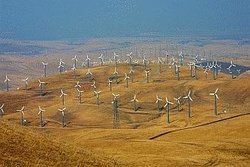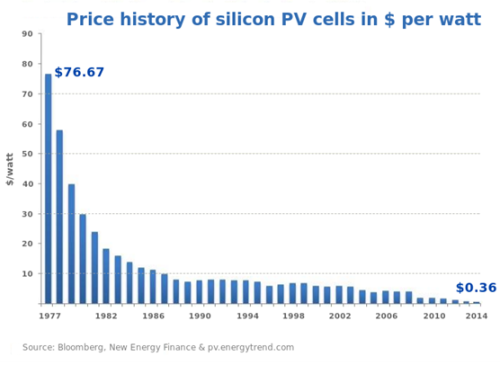March 18, 2015 by Barry Vesser
News about recent developments in the renewable energy market
indicate that business rather than government or utilities is leading the way.
Kaiser Permanente, a large consumer of power statewide, announced
that it will source half its energy from renewables by 2016.
Apple is investing $848 million to build a 2,900-acre solar farm
in southern Monterey County. The company will receive 130 megawatts over the
span of 25 years.
Google plans to power its Googleplex headquarters in Mountain View
with energy from wind turbines on the East Bay’s Altamont Pass. The company’s
20-year agreement with NextEra Energy commits it to buying half the output from
the windmills in eastern Alameda and Contra Costa counties, equal to
approximately 43 megawatts.

These companies want renewables for three reasons: to increase
their brand value, to satisfy customer expectations, and to take advantage
of wind and solar prices that are now better than fossil fuel prices.
According to a study by the investment banking firm Lazard, the
cost of utility-scale solar energy is as low as 5.6 cents a kilowatt-hour, and
wind is as low as 1.4 cents. In comparison, natural gas is 6.1 cents a
kilowatt-hour on the low end, and coal is 6.6 cents.

Peter Diamandis writes in Forbes.com that we are approaching a time of exponential growth for solar. This, he believes, results from the convergence of several factors. First is the significant drop in the price of installed solar per watt, from $77 in 1977 to $.36 now (see graph). Second is the advent of storage technology. Third is the use of satellite technology to evaluate a roof top for solar; it can now be done in minutes using Google Earth. Last is the growth of the market for electric vehicles. He argues that solar will be a central driver for our future economy.
So renewables are taxiing on the runway and ready for lift off. It is a great vision, but according to the Institute for Energy Research, currently solar accounts for only .2% of the total energy consumption in the U.S.
We have a long way to go. We can scale faster with both political and regulatory support, and with local examples, like Community Choice Energy, demonstrating the economic benefits that distributed solar brings to a community.
Barry Vesser is Deputy Director for The Climate Center.

